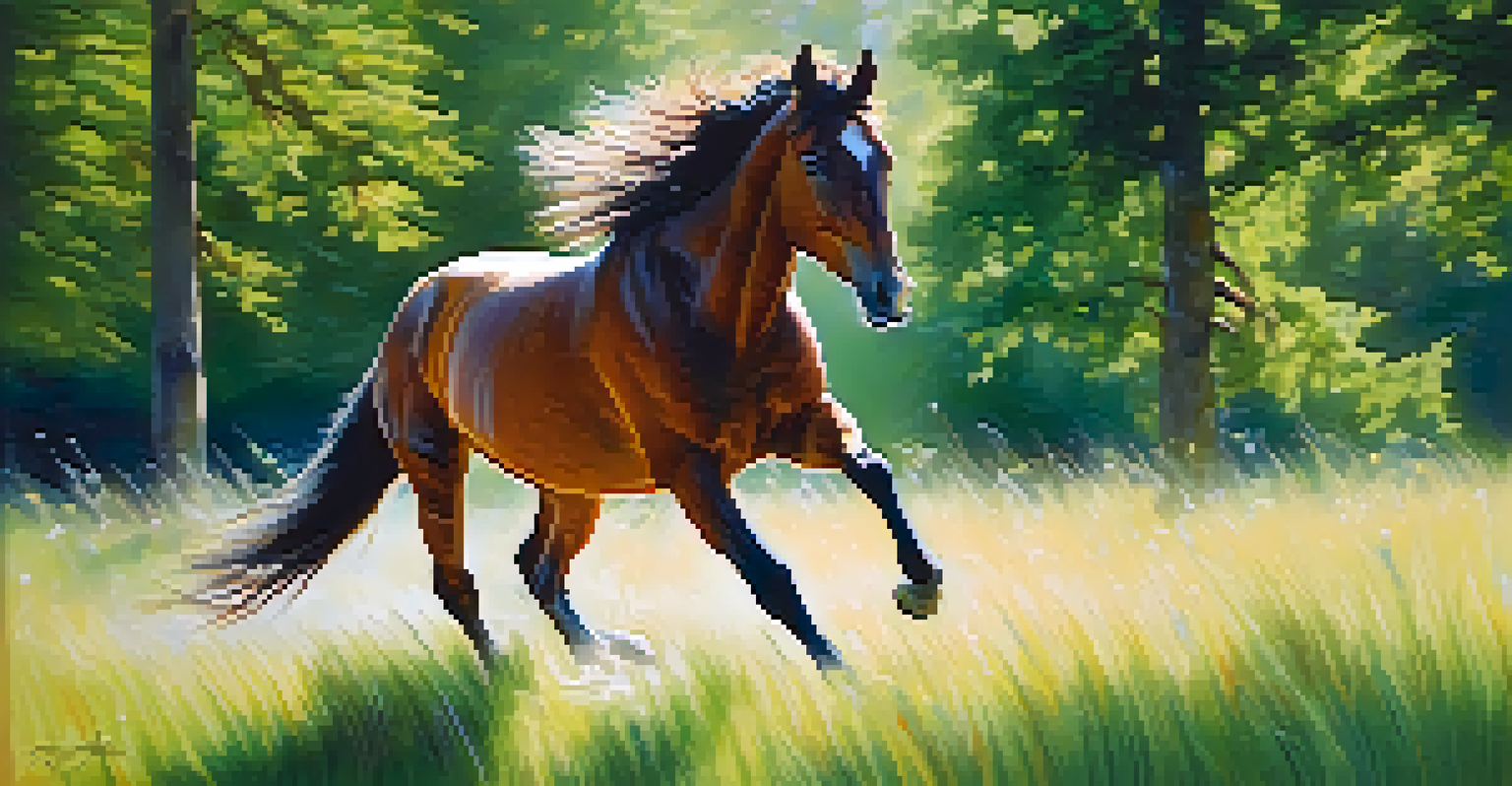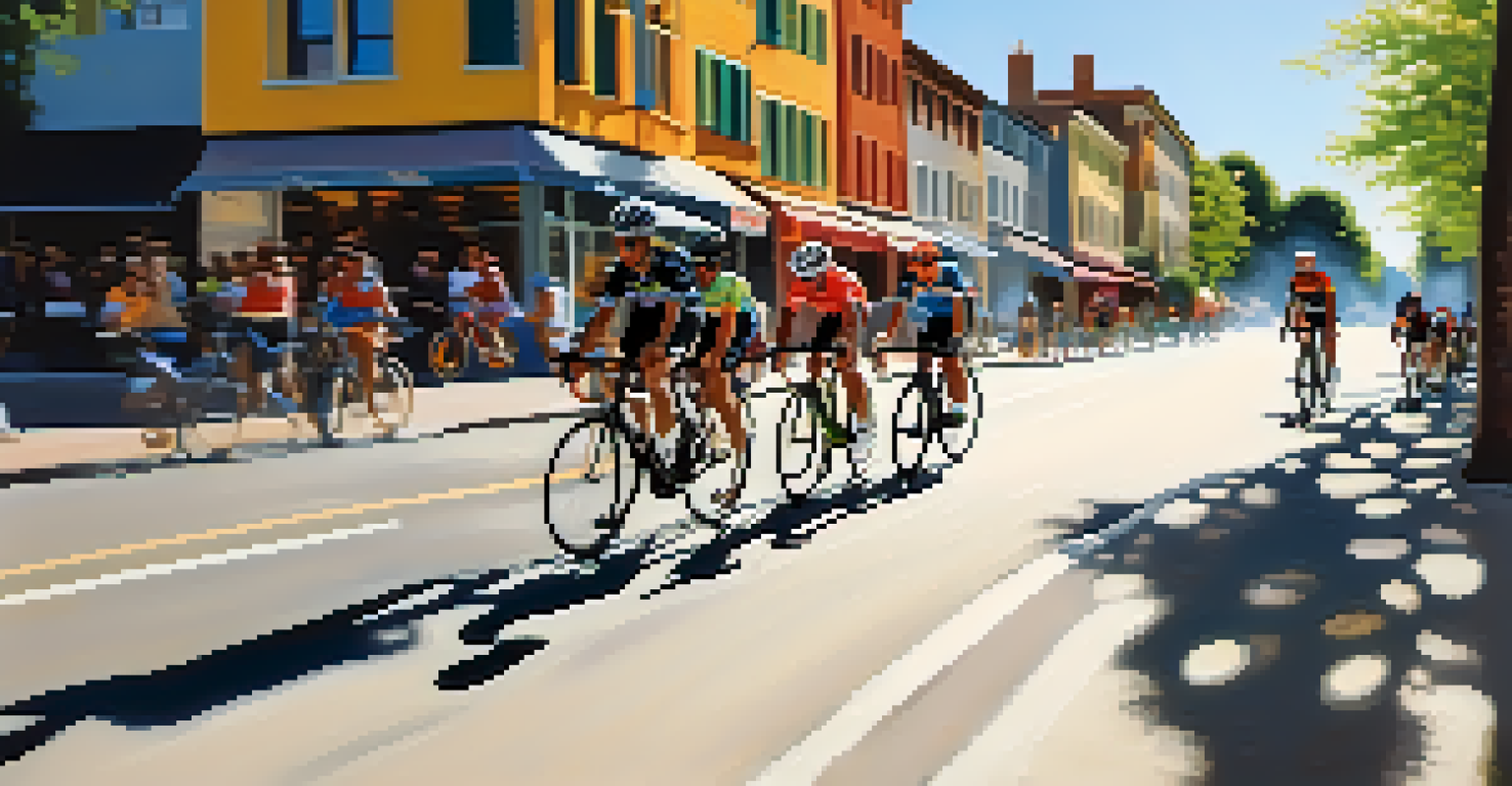Artistic Techniques for Capturing Movement in Paintings

Understanding Movement in Art: A Brief Overview
Movement in art refers to the suggestion of action or dynamism within a painting. Artists aim to create the illusion that their subjects are in motion, which adds energy and emotion to their work. This concept can be found across various styles and periods, from Impressionism to modern abstract art.
Art is the most beautiful of all lies.
Capturing movement is not just about depicting a subject in motion; it's also about conveying the feeling of that movement. Think of a dancer mid-leap or a horse galloping—each brushstroke can evoke a sense of speed and grace. This emotional connection enhances the viewer's experience, making the artwork more impactful.
Ultimately, understanding how movement works in art involves both technical skill and a deep appreciation for the subject. Artists study motion in their environment, translating these observations into visual forms that resonate with audiences. This foundation is crucial for exploring more specific techniques.
The Role of Composition in Depicting Movement
Composition, or the arrangement of elements within a painting, plays a vital role in suggesting movement. For instance, diagonal lines often create a sense of action and direction, guiding the viewer’s eye across the canvas. This can be seen in works where figures are positioned to lead the gaze along a specific path.

Additionally, the placement of subjects can evoke a sense of tension or release, depending on their proximity to the canvas edges. A subject nearing the edge may imply imminent movement, while one positioned centrally may suggest stability. This interplay can dramatically enhance the perception of motion.
Movement Adds Emotion to Art
Artists create the illusion of motion to enhance energy and emotional impact in their paintings.
Ultimately, effective composition balances elements to create a narrative of movement. By thoughtfully arranging subjects and employing lines, artists can craft a compelling visual story that resonates with the viewer, making the experience of the painting more dynamic and engaging.
Color and Light: Enhancing the Sense of Motion
Color and light are powerful tools for suggesting movement in paintings. For instance, using bright, vibrant colors can create an energetic feel, while softer hues may evoke a more tranquil motion. This contrast can significantly affect how the viewer interprets the action within the artwork.
The painter tries to master the movement of his brush as a dancer masters the movement of his body.
Similarly, the manipulation of light can enhance the sense of depth and dimension, making figures appear more three-dimensional and dynamic. Artists often use highlights and shadows to suggest the curvature of a body in motion, giving a more lifelike representation. This technique draws the viewer into the scene, amplifying the sense of action.
By experimenting with color and light, artists can create a compelling atmosphere that reflects the movement they wish to convey. Whether it’s the swirling colors of a dancer’s dress or the dramatic lighting of a racing car, these elements work together to enhance the perception of motion.
Gesture Drawing: Capturing Movement Quickly
Gesture drawing is a technique artists use to capture the essence of movement in a short amount of time. This practice involves making quick, fluid sketches that focus on the overall form and dynamics of a subject rather than precise details. It’s a way to convey energy and motion in a snapshot.
By prioritizing the movement and posture of a subject, artists develop a deeper understanding of how bodies move through space. This method encourages spontaneity and freedom in their work, allowing them to capture the fleeting moments that define movement. It’s like a dance between the artist and the subject.
Composition Guides Viewer’s Eye
The arrangement of elements, including lines and subject placement, suggests movement and enhances narrative.
Gesture drawing serves as a foundational skill for artists, helping them translate their observations into more detailed works. These quick sketches can inform later paintings, ensuring that the sense of movement remains authentic and vibrant, making the final artwork resonate with viewers.
Using Perspective to Convey Depth and Action
Perspective is a crucial element in art that can dramatically influence how movement is perceived. By manipulating perspective, artists can create a sense of depth that enhances the action within a scene. For example, using a low viewpoint can make a figure appear larger and more imposing, suggesting urgency or force.
Linear perspective, where parallel lines converge at a vanishing point, can also guide the viewer’s eye into the painting, reinforcing the sensation of movement. This technique draws attention to the action, making it feel more immediate and engaging. It’s a powerful way to immerse viewers in the artwork’s narrative.
Ultimately, effective use of perspective can transform a static scene into a dynamic experience. By thoughtfully considering how depth and angles influence perception, artists can create compelling representations of movement that resonate with audiences on a deeper level.
Incorporating Repetition to Suggest Motion
Repetition is a technique that can evoke a sense of movement in a painting by creating rhythm and flow. Artists often repeat shapes, colors, or patterns to suggest ongoing action, much like a series of frames in a film. This visual rhythm can lead the viewer’s eye through the artwork, making the movement feel continuous.
For example, in a painting of a running athlete, the artist might depict multiple figures in slightly different poses to create a sense of speed and motion. Each figure, while distinct, contributes to the overall feeling of dynamic action, drawing the viewer into the moment.
Style Shapes Movement Representation
Different artistic styles, like Impressionism and Cubism, offer unique ways to depict motion and engage viewers.
Incorporating repetition not only enhances the sense of movement but also adds a layer of complexity to the composition. It invites viewers to explore the artwork more closely, discovering new details and connections that enhance their understanding of the depicted action.
The Impact of Style on Movement Representation
The artistic style chosen by an artist greatly influences how movement is captured in a painting. Different styles, such as Impressionism, Cubism, or Abstract, offer unique approaches to depicting action. For example, Impressionists often used quick brushstrokes to convey the fleeting nature of movement, creating a sense of immediacy.
In contrast, Cubism might break down a figure into geometric shapes, suggesting movement through fragmented forms. This abstract representation challenges traditional notions of motion, inviting viewers to interpret the action in new and engaging ways. Each style brings its own flavor to the depiction of movement.

Ultimately, the choice of style not only affects the visual outcome but also shapes the overall message of the artwork. By exploring various styles, artists can find innovative ways to express movement, enriching the viewer's experience and expanding the boundaries of artistic expression.